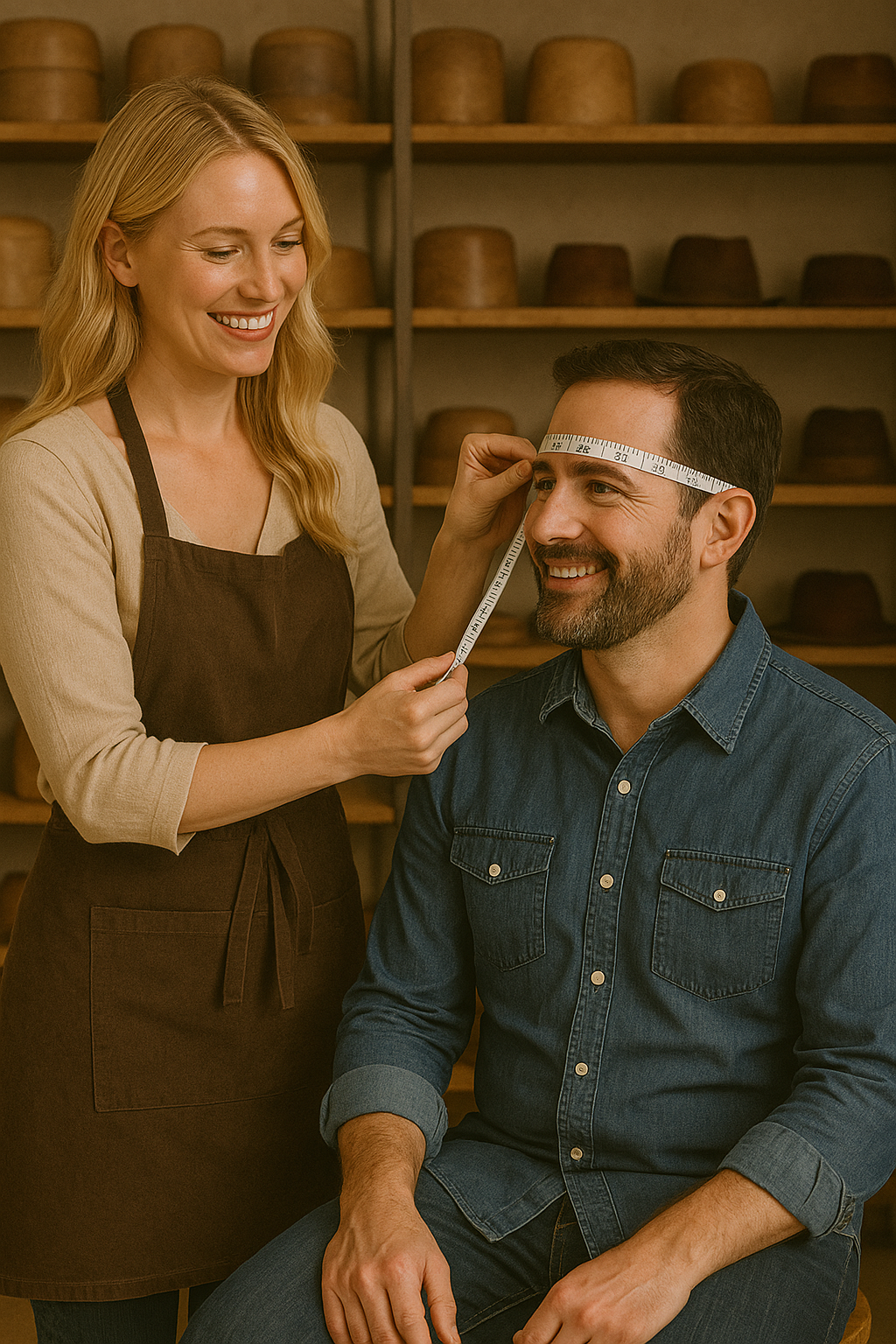
How to Measure Your Hat Size
1. Use a soft measuring tape, or a piece of string with a ruler.
2. Place it 3/4" to 1" above your eyebrows and 1/4" to 1/2" above the tops of your ears. This is where a traditional hat should rest. Keep the tape level around your head.
3. Pull it snug but not tight, and take the measurement in centimeters or inches.
Tips for a Great Fit
Buying a hat online without trying it on can feel tricky, but these tips will help you get it right:
Measure more than once. Double-check your measurement for accuracy. Using a mirror or asking a friend can help keep the tape level.
Consider your hair. Measure with your hair styled the way you’ll wear it. Fuller hairstyles can affect how your hat sits.
Size up if unsure. If you land between two sizes, go with the larger one.
Expect slight variations. Handmade hats may differ slightly, even within the same size. A 7 3/8 in one style might feel a touch different than another.
Standard Hat Size Guide
| Head (inches) | Head (cm) | Hat Size | Size |
|---|---|---|---|
| 203/4 | 53 | 65/8 | XS |
| 21 1/8 | 54 | 6 3/4 | S |
| 21 1/2 | 55 | 6 7/8 | S |
| 21 7/8 | 56 | 7 | M |
| 22 1/4 | 57 | 7 1/8 | M |
| 22 5/8 | 58 | 7 1/4 | L |
| 23 | 59 | 7 3/8 | L |
| 23 1/2 | 60 | 7 1/2 | XL |
| 23 7/8 | 61 | 7 5/8 | XL |
| 24 1/4 | 62 | 7 3/4 | XXL |
| 24 5/8 | 63 | 7 7/8 | XXL |
| 251/4 | 64 | 8 | XXXL |
| 25 5/8 | 65 | 8 1/8 | XXXL |
The Best Hat for Your Face Shape
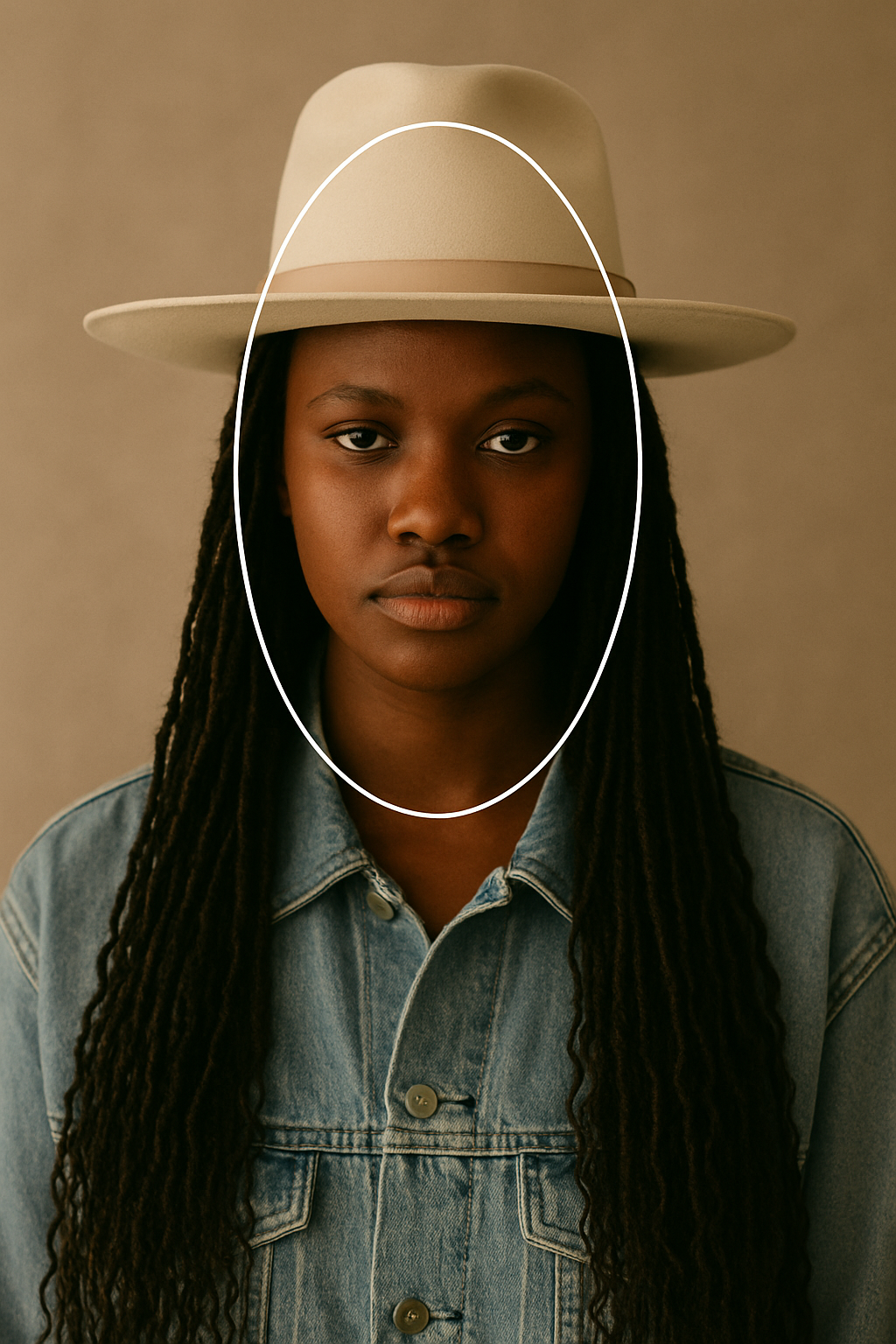
Long / Oval Faces
What defines it: Hats with wide brims and structured crowns add balance by creating width.
What works well: Ranchers, cowboy styles, and classic wide-brim fedoras all work beautifully because they frame the face and reduce the sense of length.
What to avoid: Very narrow brims or shallow crowns, which can exaggerate vertical length.
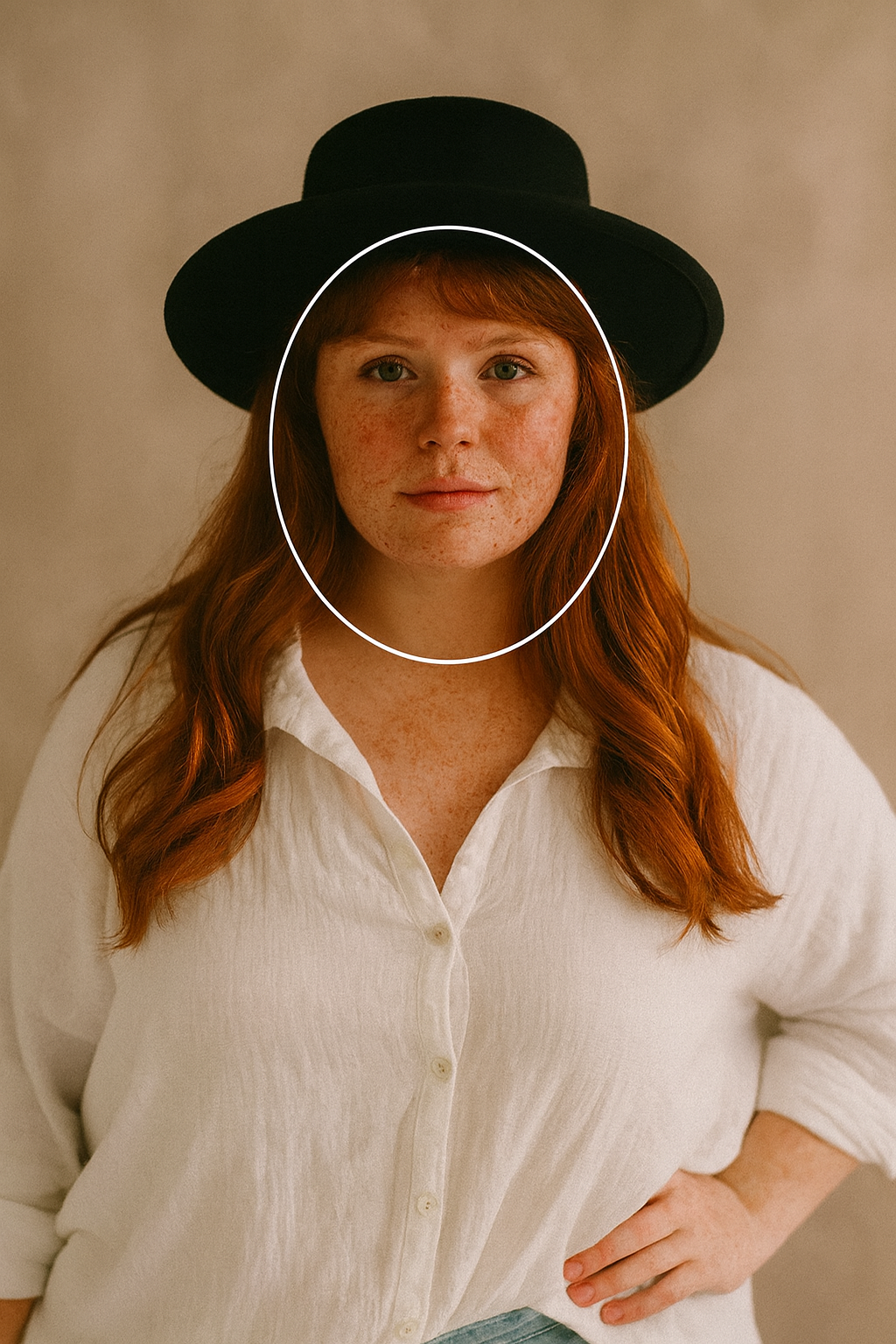
Round Faces
What defines it: Full cheeks, a rounded chin, and a face that’s nearly equal in width and length.
What works well: Styles that add vertical height and structure. Tall crowns, flat brims, and pencil-roll brims create definition and elongation. Western styles with sharper lines are especially flattering, as they contrast with softer facial curves.
What to avoid: Very round, shallow crowns that mirror the shape of your face rather than balancing it.
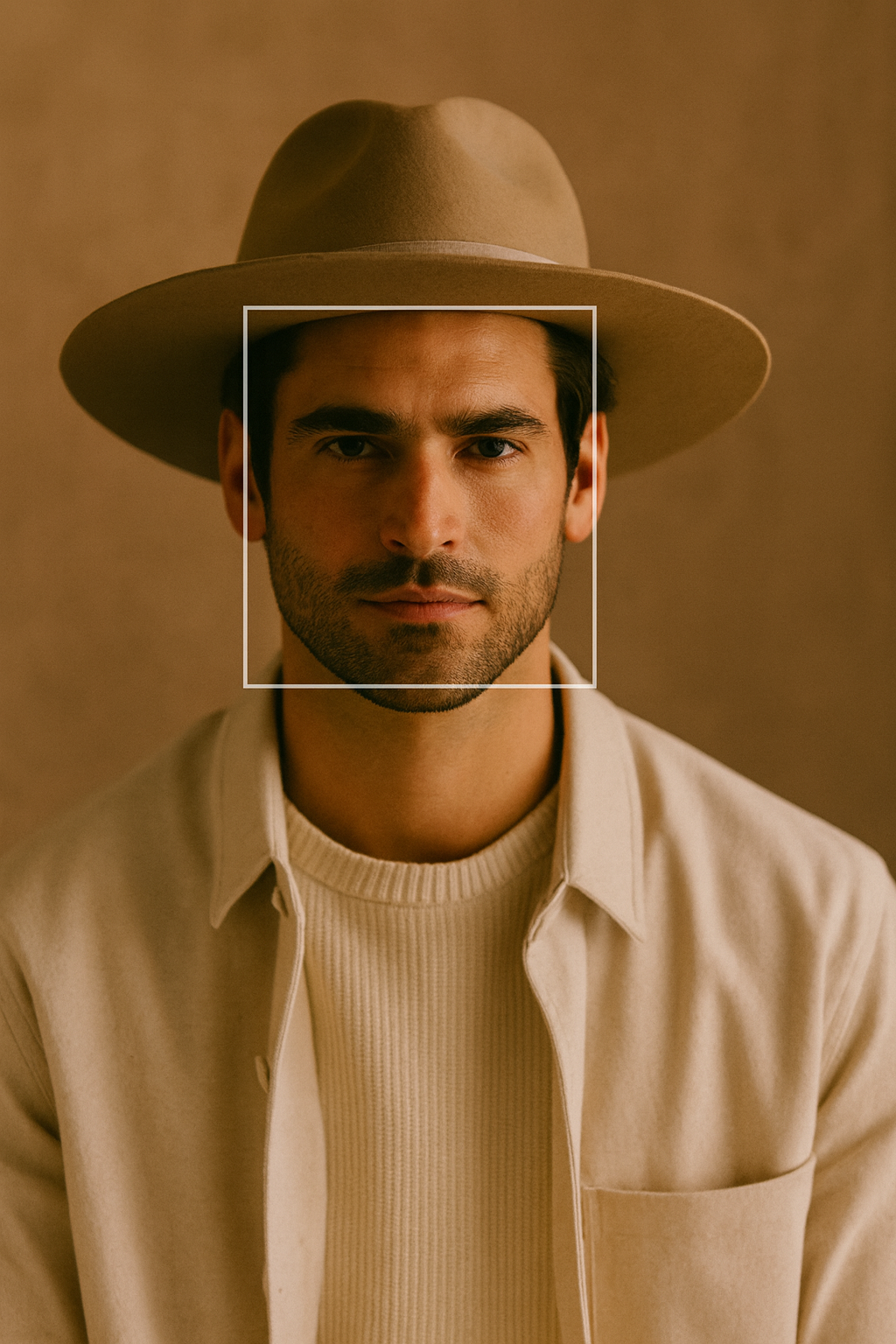
Square Faces
What defines it: Strong jawline, broad forehead, and angular cheekbones.
What works well: Rounded crowns and curved brims help soften sharp lines. Boater-style hats, lifeguard shapes, or medium-to-wide brim felt hats add balance and flow.
What to avoid: Rigid, highly angular styles that can exaggerate your natural structure, such as very square ranchers.
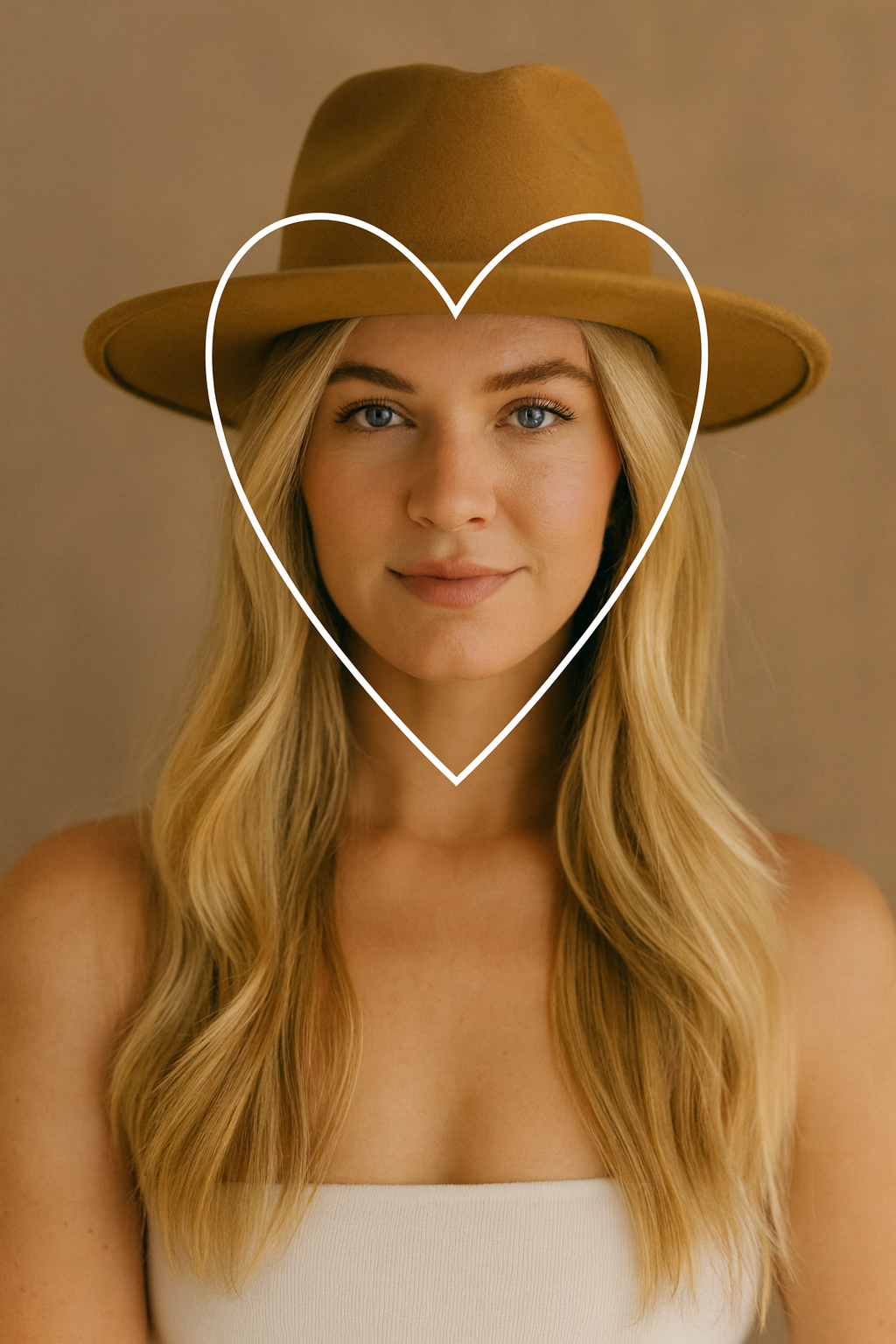
Heart Faces
What defines it: Wider forehead with a narrower jawline and softly pointed chin.
What works well: Shorter to medium brims and modest crowns that keep proportion with the jawline. Fedoras and structured mid-brim hats complement this shape without overwhelming the upper half of the face.
What to avoid: Very wide brims, which can draw too much attention upward and overshadow delicate features.
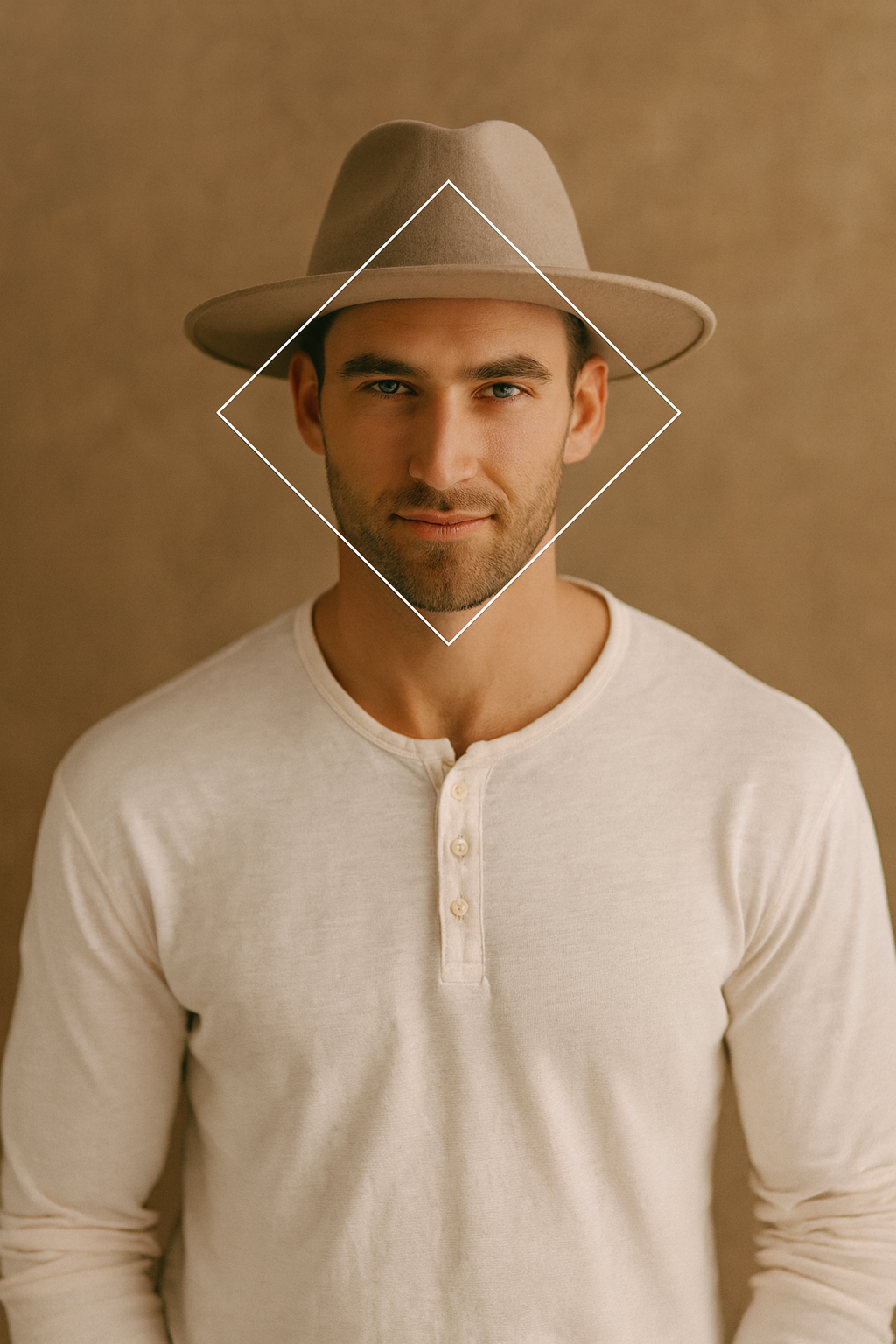
Diamond Faces
What defines it: Narrow forehead and jawline with broad, prominent cheekbones.
What works well: Balanced, clean-brimmed hats that highlight cheekbones without adding extra angles. Medium crowns and brims that sit evenly across the face provide harmony. Classic western and fedora styles tend to flatter this face shape especially well.
What to avoid: Hats that are too angular or sharply pinched, which can exaggerate existing angles.
The Hitmaker Promise
Your satisfaction is our standard. If your hat doesn't inspire confidence immediately, we’re here to work with you whether through adjustments or exchanges until it's just right.


